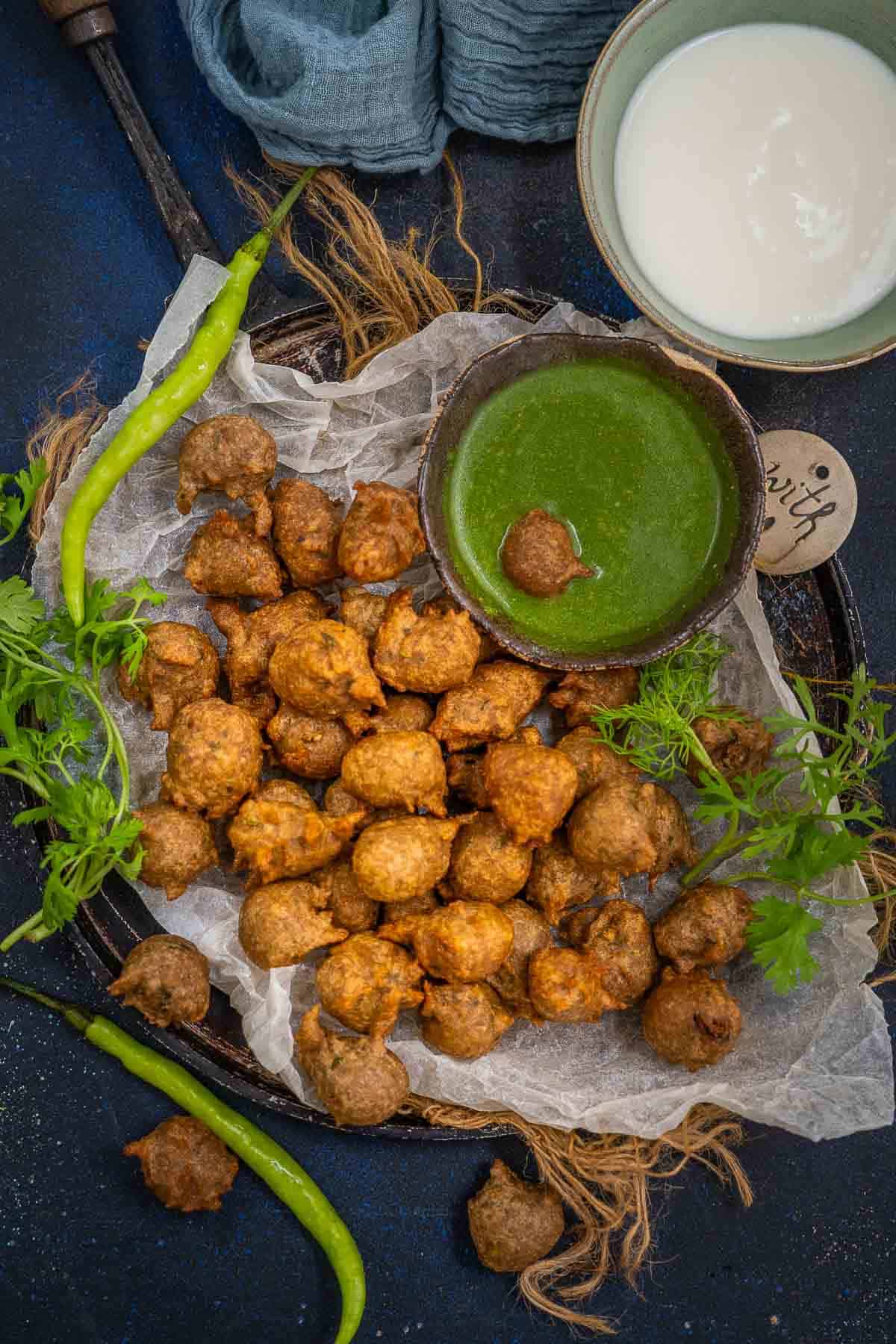on Sep 29, 2021, Updated Feb 13, 2024
About Kuttu Ke Pakore
Kuttu Ke Pakore (Vrat Ke Pakore, Falahari Pakora, Buckwheat Flour Fritters) is a deep-fried snack made using kuttu aata (buckwheat flour), rajgira atta (amaranth flour), and a few other ingredients. Kuttu or Buckwheat is a great source of carbohydrates and dietary fibers. It is also rich in minerals and vitamins and is a great grain to include in our diet. These vrat ke pakore are gluten-free, vegan, and vegetarian; the recipe can be easily halved, doubled, and tripled. You can also air fry or shallow fry the pakoras instead of deep frying them; however, they taste best when deep-fried. Here are some more vrat recipes that you might like
Sabudana Khichdi Sabudana Vada Vrat Wale Sookhe Aloo Bhagar Shengdana Amti Roasted Makhana Namkeen Sabudana Kheer Sabudana Thalipeeth Dhaniya Panjiri
Ingredients
Kuttu Atta – Kuttu is called buckwheat in English. It is a gluten-free grain and is used to make Hindu vrat recipes. You will find kuttu ka atta (kuttu flour, buckwheat flour) in any Indian grocery store or online. Rajgira Atta – Rajgira is called amaranth in English. It is also a gluten-free grain available in Indian grocery stores or online. You can replace rajgira flour with water chestnut flour. Boiled Potatoes – Boiled and mashed potatoes help to bind the flour. You can boil them in a traditional pressure cooker or an instant pot. Others – You will also need cilantro (fresh coriander leaves), green chilies, oil for frying, and rock salt (sendha namak). You can use regular salt instead of sendha salt if you are not making the pakora for vrat. For a taste change, you can add dried pomegranate seeds, black pepper powder, red chili powder, cumin powder, etc., to the batter.
How To Make Kuttu Ke Pakore
Mix
1 cup kuttu atta 1 cup rajgira atta 2 cups boiled, peeled, and grated potatoes 2 teaspoon rock salt (sendha namak) 2 tablespoon chopped cilantro 2 teaspoon chopped green chilies
in a large mixing bowl. Add water slowly (approx ¾ cup) and mix to make a pakoda-like thick batter. The consistency of the batter should be very thick and droppable. It should be like that of mashed potatoes. Note – The batter to fry the pakoda should be of the right consistency. If it looks too thin, add some more flour; if it looks very thick, add a few tablespoons of water. Heat 4-5 cups of oil in a non-stick pan over high heat. When the oil is hot, drop small pakoras using your fingers or a small spoon and fry on high heat until crispy and golden brown. Stir at regular intervals while frying for even frying. Note – Fry the pakoras in 3-4 batches, and do not overload the pan. Kuttu Pakora are perfectly cooked when they are dark brown and crispy from the outside. They won’t taste good if not fried properly. Drain the pakora on a plate lined with kitchen tissue. Serve these deep-fried fritters hot with plain yogurt, coconut chutney, or green chutney.
Serving Suggestions
These falahari pakoras are specially made for vrat (Hindu fasting days) on Indian festivals like Navratri, Shivratri, or Ekadashi. You can also make these delicious buckwheat fritters on regular days as well for tea-time snacking. Serve kuttu pakora with yogurt. Buckwheat flour is considered warm, and yogurt (curd, dahi) helps to balance its heat. You can also serve these with phalahari chutney, such as coconut chutney, tamarind chutney, or green chutney.
Storage Suggestions
These kuttu pakoras taste best when made fresh. Make the batter just before frying the pakora. If you have leftover pakora, then reheat them in an air fryer.
You Might Also Like











